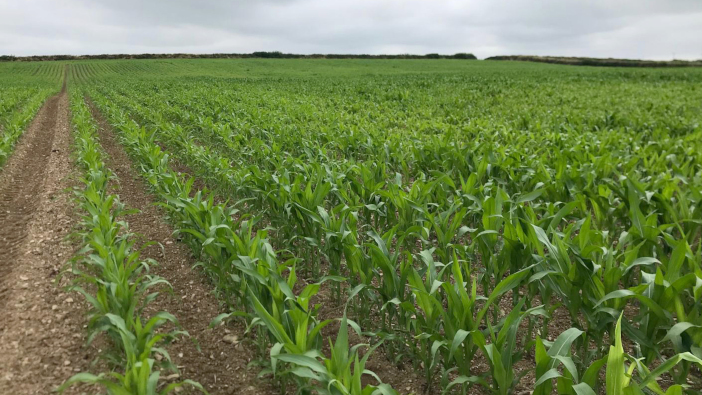Inconsistent conditions have meant that livestock farmers could face a shortage in homegrown forage this winter. In response to this, ProCam’s Simon Montgomery is advising growers that an autumn catch crop could mitigate the shortfall.
“After one of the wettest years in recent history, the summer hasn’t given growers any respite, with unrelenting rain showers and below average sunshine preventing forage crops from growing as hoped,” he explains.
Grass growth has been particularly affected, with growers concerned that second and third silage cuts have not produced the desired biomass. The weather conditions have also impacted maize growth, with concern that low stock challenges could be further compounded.
“One way of plugging the gap is to plant a catch crop as soon as the autumn’s cereal and/or maize harvests have concluded,” Simon notes.
“They can either opt to drill a fast-growing single species ryegrass ley, choose a triticale based multi-species mixture which will have the added advantage of qualifying for an SFI (Sustainable Farming Incentive) payment under the scheme’s SAM2 classification, or look at a forage and rye type mixture.”
For the former, he recommends ProCam’s Hurricane III mix from the company’s Field Options range.
“Based on a new, high performance and exceptionally hardy diploid Westerwold ryegrass, Hurricane III is ideal in scenarios where grass is required in a hurry,” Simon explains. “Sown after maize, its combination of complementary varieties produces big cuts of silage early in the spring, with UK trials showing it can deliver as much as 8.1-9.1 tonnes of dry matter per hectare. It is also suitable for spring and autumn grazing when managed correctly and will easily persist for at least 12 months.”
For multi-species cropping, T101 N-Max is more appropriate Simon adds. “N-Max is based on an 80:20 mixture of forage triticale and hairy winter vetch. The triticale element is more robust and faster establishing than forage rye which makes it ideal for the production of spring forage for early stock turnout and to reduce the reliance on bought-in feed when silage clamps run empty.
“N-Max also meets the SAM2 specification by providing over-winter ground cover which scavenges existing nutrients and prevents leaching losses and reduces soil erosion. It also excels at suppressing autumn weeds, and, thanks to its ability to withstand even the harshest of winters which enables it to keep growing through the winter, it has the best potential for producing spring biomass with a similar feed value to forage rye.”
N-Rich is an 80:20 split of forage rye and hairy winter vetch varieties and could be a third option for growers, which is also suitable for establishing after maize. “N-Rich occupies the middle ground for those who might not have the confidence to grow a triticale-based ley,” Simon explains.
“It too continues to grow even in very hard winters and produces a good biomass for spring cutting or can be grazed from January onwards. And it is also SAM2 compliant which means producers electing for this option can also benefit from an SFI payment.”
For more information go to www.field-options.co.uk


